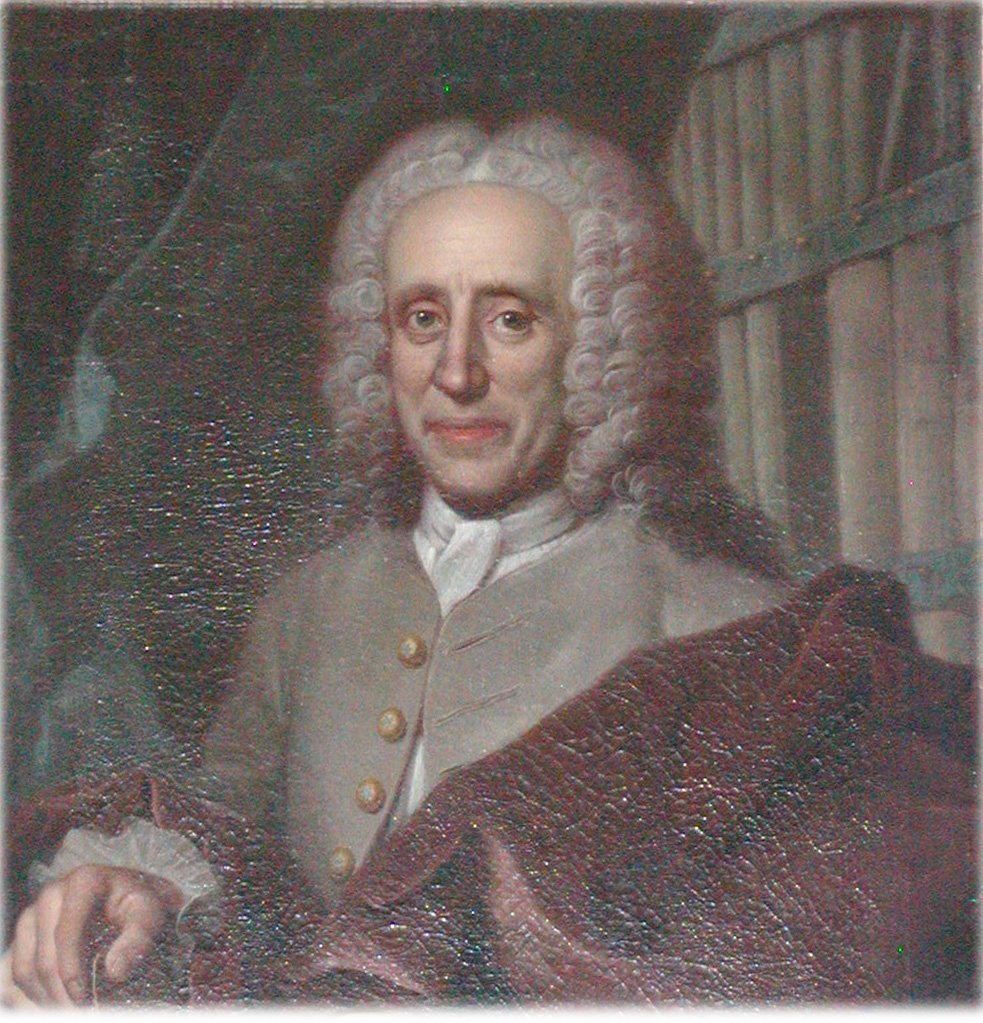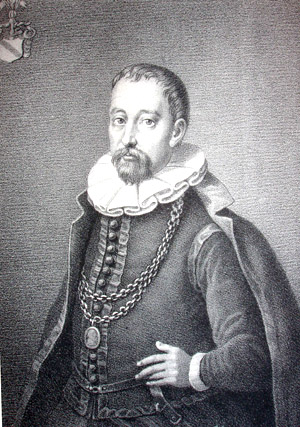|
Historiographer Royal (Denmark)
''Kongelig historiograf'' (''Historicus Regius'', "Historiographer Royal") was a position in the kingdom of Denmark-Norway (after 1814 Denmark) between 1594 and 1883. The parallel office in Sweden was established in 1618, in England in 1660 and in Scotland in 1681. The office was originally created with the aim of producing a national history of Denmark from the 13th century, a "continuation of Saxo", improving upon the first such work, published in the vernacular in 1600 by Arild Huitfeldt. The office is not to be confused with that of ''kongelig ordenshistoriograf'', the position of official historian of the Danish system of orders which was established in 1808 and remains in existence today. List of Historiographers Royal: *Niels Krag: 1594-1602 * Jon Jakobsen Venusinus: 1602-1608 * Claus Christoffersen Lyschander: 1616-1623/4 *Johannes Isacius Pontanus: 1618-1639 (appointed in parallel with Lyschander) *Johannes Meursius: 1624-1639 * Stephan Hansen Stephanius: 1639-1650 ... [...More Info...] [...Related Items...] OR: [Wikipedia] [Google] [Baidu] |
Historiographer Royal
Historiographer Royal is the title of an appointment as official chronicler or historian of a court or monarch. It was initially particularly associated with the French monarchy, where the post existed from at least 1550, but in the later 16th and 17th centuries became common throughout Europe.Denys Hay, ''Annalists and Historians: Western Historiography from the Eighth to the Eighteenth Century'' (London and New York, 2016), p. 141. The Historiographer Royal for Scotland is still an existing appointment. See also * Chief Chronicler of the Kingdom (Portugal) * Historiographer Royal (Denmark) * Historiographer Royal (England) * Historiographer Royal (Scotland) * Rikshistoriograf The position of ''rikshistoriograf'' (Swedish, known in Latin as ''historiographus regni'', i.e. ''Historiographer of the Realm'' or ''Royal Historiographer''), existed in Sweden from the early 17th century until 1834. The first appointment of a si ... (Sweden) References {{set index article Court title ... [...More Info...] [...Related Items...] OR: [Wikipedia] [Google] [Baidu] |
Jon Jakobsen Venusinus
Jon Jakobsen Venusinus (c. 1558 – 1608) was a Danish theologian, naturalist and historian. He was born on the island of Ven as the son of the local pastor, Jakob Jonsen. The father was transferred to Landskrona in 1563, where Jon Jakobsen assumed the surname ''Coronensis'', which he changed to ''Venusinus'' after the island of Ven became widely known due to the observatories built there by Tycho Brahe. He visited the school at Frederiksborg, and later studied in Copenhagen and Rostock. In 1579 David Chytræus recommended him to Frederick II, who granted him an annuity to support his studies. Venusinus spent some years travelling in Europe, visiting Germany, Austria, Switzerland and Italy, and completed a master's degree in Wittenberg. Returning to Denmark, he was made parish priest in Herfølge and Sædder and dean of Bjæverskov Herred in 1584, a position in which he was succeeded by Claus Christoffersen Lyschander in 1587. Venusinus married Agathe, the daughter of pro ... [...More Info...] [...Related Items...] OR: [Wikipedia] [Google] [Baidu] |
Hans Gram (historian)
Hans Gram (28 October 1685– 19 February 1748) was a Danish academic, philologist and historian. Biography Gram was born at Bjergby in Hjørring on North Jutlandic Island, Denmark. His father was a parish priest. In 1703, he graduated from the University of Copenhagen. In 1708 he acquired a Master's Degree. In 1714 he became a professor of Greek at the University of Copenhagen. In 1730 he was named royal historian and royal librarian as well as manager of the Royal Library and the secretary of the Royal Archives. From 1740, he returned to the University of Copenhagen where he served as rector from 1744-1745. He is best known for his critical editions of old Danish history, being credited with the discovery of many new sources and the correction of countless errors pertaining to Danish history. He was a catalyst towards the 1742 founding of the ''Videnskaberne Selskab'' (Royal Danish Academy of Sciences and Letters). He was the author of ''Nucleus latinitatis, qvo pleræ ... [...More Info...] [...Related Items...] OR: [Wikipedia] [Google] [Baidu] |
Vitus Bering (1617–1675)
Vitus Pedersen Bering (6 October 1617 – 20 May 1675) was a Danish poet and historian. He served as Danish Historiographer Royal and was the great uncle of the explorer Vitus Bering (1681–1741). Early life and education Vitus Pedersen Bering was born in Viborg, Denmark. Bering was the son of the city mayor Peder Pedersen Bering and Maren Vitusdatter Brun. He graduated from Viborg Katedralskole in 1635. He soon attracted attention for his poems in Latin and was called to serve as steward for Otte Thott, son of Scania county governor Tage Thott (1580–1658). He subsequently conducted a seven-year foreign trip to Leiden (1639), Orléans (1640), Siena (1642), Rome and Padua (1647) and Strasbourg and Basel (1648). Career After their return to Denmark, he took a Master's degree at the University of Copenhagen in 1649. He immediately assumed a position as at the University of Copenhagen. Later that same year he was appointed to professor in history at Sorø Academy and Hist ... [...More Info...] [...Related Items...] OR: [Wikipedia] [Google] [Baidu] |
Stephanius
Stephan Hansen Stephanius (July 23, 1599 – April 22, 1650) was a Danish historian and philologist. His name is sometimes fully Latinized as "Stephanus Johannis Stephanius" Biography He was born in Copenhagen, Denmark-Norway. He attended Sorø Academy where his father Hans Stephensen (1561-1625) was a professor and superintendent. He later transferred to Herlufsholm School. He studied at the University of Copenhagen where in 1618 he took the Philosophical Baccalaureus. He subsequently studied at the University of Rostock and University of Leiden. After returning he became rector of Slangerup in 1625 and received his Master's Degree at the University of Copenhagen. In 1639, he became a professor at Sorø Academy and was appointed Royal historiographer. Staphensen, Hans (Johannes Stephanius), 1561-1625 ''Dansk biografisk Lexikon'' Retrieved December 1, 2020 He published a Latin edition of ''Svenonis Aggonis filii, qvæ extant, opuscula'' in 1642. ''Gesta Danorum'' ... [...More Info...] [...Related Items...] OR: [Wikipedia] [Google] [Baidu] |
Johannes Meursius
Johannes Meursius (van Meurs) (9 February 1579 – 20 September 1639) was a Dutch classical scholar and antiquary. Biography Meursius was born Johannes van Meurs at Loosduinen, near The Hague. He was extremely precocious, and at the age of sixteen produced a commentary on the ''Cassandra'' of Lycophron. For ten years he was the tutor to the children of Johan van Oldenbarnevelt, accompanying the family on Oldenbarnevelt's diplomatic missions to many of the courts of Europe.Johannes van Meurs in Abraham van der Aa While on such a trip, in 1608 he obtained a doctorate of Law in Orléans. In 1610 he was appointed professor of Greek and history at Leiden, and in the following year historiographer to the States-General of the Netherlands. After Oldenbarnevelt's execution in 1619, though he had attempted to remain neutral in religious affairs, Meursius was seen as leaning toward Arminianism, or Remonstrant beliefs by reason of his service to the Oldenbarnevelt children, and his p ... [...More Info...] [...Related Items...] OR: [Wikipedia] [Google] [Baidu] |
Johannes Isacius Pontanus
Johan Isaaksz PontanusIn Latin Johannes Isacius Pontanus, in Danish Johan Isaksen (21 January 1571–7 October 1639) was a Dutch historiographer. Pontanus was the son of Margaretha van Delen and Isaac Pietersz, the Dutch consul to Denmark stationed in Helsingør.S.P. HaakPontanus, Johannes Isacius of Johan Isaakszoonin ''Nieuw Nederlandsch biografisch woordenboek'', Vol 1 (1911) The painter Pieter Isaacsz (1568–1625) was his older brother.Pieter Isaacsz at the RKD In 1578 his family returned to the Netherlands and Pontanus grew up in . In 1589 he enrolled as a medical student at the |
Claus Christoffersen Lyschander
Claus Christoffersen Lyschander (also ''Lyscander, Lyskander''; 1558–1623/4) was a Danish poet and historian. A native of Nørre Vram, Skåne, Denmark (now in Bjuv Municipality, Sweden), his boyhood was affected by the Northern Seven Years' War, some of his older siblings and his mother fell victim to the epidemics which accompanied the war. After the war, he was schooled in Herrisvad convent school. His earliest known period in Danish and Latin was composed at the age of 20. He studied at Rostock university under David Chytraeus. He spent several years in Germany, possibly studying at the university at Wittenberg. In January 1587 wrote a letter of recommendation for Lyschander to Frederick II. Lyschander was made pastor of Herfølge and Sædder parishes, one of the more prestigious positions in Zealand, where he replaced Jon Jakobsen Venusinus whom he later also succeeded as Royal Historian. Lyschander married in 1588 and was appointed dean at Bjæverskov Herred ( ... [...More Info...] [...Related Items...] OR: [Wikipedia] [Google] [Baidu] |
Niels Krag
Niels Krag (1550-1602), was a Danish academic and diplomat. Krag was a Doctor of Divinity, Professor at the University of Copenhagen, and historiographer Royal. Mission to Scotland In August 1589 the Danish council decided that Peder Munk, Breide Rantzau, Dr Paul Knibbe, and Niels Krag would accompany Anne of Denmark, the bride of James VI, to Scotland. After several mishaps, poor weather, and " contrary winds" they decided to stay at Oslo over the winter. In May 1593 Krag travelled to Scotland with Steen Bille. Anne of Denmark came aboard their ship at Leith on 31 May, with her ladies in waiting, including the two sisters Marie Stewart, Countess of Mar and Henrietta Stewart, Countess of Huntly. She gave the sailors a gift of 100 gold crowns. Their mission was primarily to accept the lands of Dunfermline Abbey given to Anne as a "morning gift" by her husband, James VI of Scotland, recently re-confirmed in the Parliament of Scotland. They negotiated with John Maitland of Thir ... [...More Info...] [...Related Items...] OR: [Wikipedia] [Google] [Baidu] |
List Of Orders, Decorations, And Medals Of The Kingdom Of Denmark
The award system of Denmark, and especially the regulations for who is allowed to wear which medals, is one of great variation. The current honour-system has been created one step at a time since the 16th century. The system consists of royal orders and medals, official/governmental medals and some few private medals that have been approved by the monarch. __TOC__ Orders of chivalry Order of the Elephant Order of the Dannebrog Medals Civil medals Uniformed Service decorations Commemorative medals Historic Historic Orders * Order of the Armed Arm 1616 * Order of the Perfect Union 1732 – 1770 * Order of Mathilde 1771 – 1772 * Order of Christian VII 1774 – 1800 Historic Medals * King Christian X's Liberty Medal (1946) * Royal Life Guards 350th anniversary commemorative medal (2008) * Guard Hussar Regiment 400th anniversary commemorative medal (2014) References External links Orders and Medals Society of DenmarkDanish Ribbons and medals { ... [...More Info...] [...Related Items...] OR: [Wikipedia] [Google] [Baidu] |
Arild Huitfeldt
Arild Huitfeldt (Arvid) (11 September 1546 – 16 December 1609) was a Danish historian and state official, known for his vernacular Chronicle of Denmark. Life Huitfeldt was born into an aristocratic family from Scania, part of the Kingdom of Denmark at the time. He was partly educated in Germany and France, made his career as a state official and was, from 1573 to 1580, First Secretary to the Danish Chancellery, the King's central administrative organ. From 1583 to his death he was also superintendent at Herlufsholm School, the first Danish boarding school. In 1586 he achieved his highest appointment, becoming ''Rigskansler'' ( Chancellor of the Realm, the very approximate equivalent to a modern Minister of Justice), until shortly before his death. Huitfeldt also owned several manor estates and handled a number of diplomatic assignments. As a politician and as an official he appears to have been studious, conservative, and sociable, avoiding overt clashes with his colleagues. ... [...More Info...] [...Related Items...] OR: [Wikipedia] [Google] [Baidu] |



